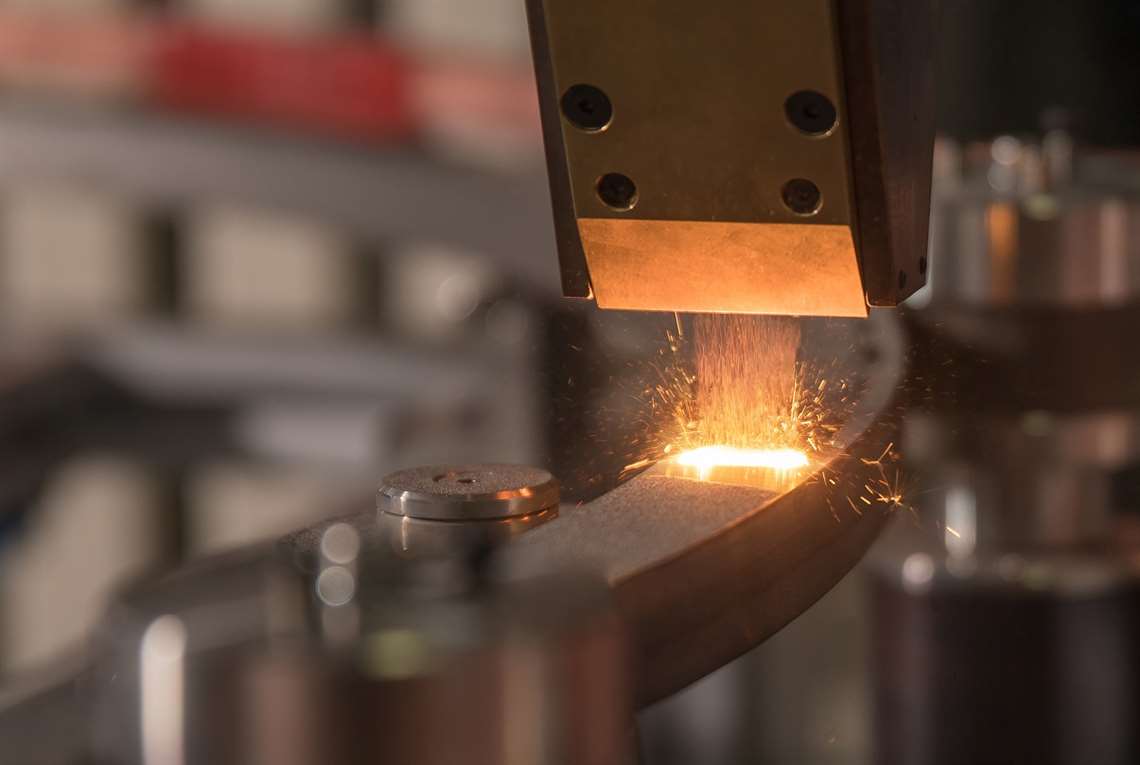Laser Focus
26 September 2018

Federal-Mogul Powertrain said it is developing laser processes designed to offer piston rings for large-bore engines greater wear resistance.
The company techniques offer an environmentally friendly, long-term alternative to galvanic coatings and are the latest step in the company’s continuous research into new surface treatments that will meet the challenges of future engine and fuel developments in the marine and industrial sectors.
The company said that trends to reduce operating costs and emissions are driving future engine designs, both 2-stroke and 4-stroke, and will result in heavier loads and increased temperatures for piston rings. Operators are requiring reduced friction, fuel and oil consumption, as well as increased time between overhauls, with ring lifetimes of 24 000 hours or more expected. The worldwide introduction of low-sulfur fuels for the marine sector beginning 2020 and the increased market share of gas and dual-fuel engines will present additional tribological challenges for piston rings and cylinder liners, the company said. Meeting these challenges requires ring materials with high dimensional stability as well as coatings with low coefficients of friction, high scuff resistance and low piston ring and cylinder wear rates.
“We are constantly developing advanced new technologies, in order to stay ahead of emerging trends in the global marine market,” said Peter Arndt, director and general manager for Large Bore Engine Rings, Federal-Mogul Powertrain. “Laser processes offer exciting possibilities for surface enhancement and can be applied to a wide range of base materials including both gray iron and SG iron.”
The company showcased its range of piston rings and other large-bore engine products at the SMM trade show in Hamburg, Germany in September.
Federal-Mogul Powertrain said it is developing a number of laser processes, including laser structuring, laser re-melting, laser alloying and laser deposition welding. Laser deposition welding is already widely used as a coating process to replace hard chrome layers, using Ni- and Co-based alloys with dispersed hard materials. However, meeting future requirements for piston ring running faces will require new coating materials. Promising candidates are Fe- and Ni-based materials alloyed with hard phases and carbide forming elements, the company said.
The surface properties of gray cast iron materials can be drastically altered by laser re-melting to significantly increase abrasive wear resistance, according to Federal-Mogul. A high-energy laser melts the iron, which is spontaneously quenched by movement of the laser focus to produce a white-solidified, ledeburitic material structure containing Fe3C with a hardness of approximately 800 HV. Size and distribution of the Fe3C hard phases can be flexibly adjusted by the laser energy input. Both laser re-melting and laser deposition welding produce a metallurgical bond between the base material and the functional coating material.
Federal-Mogul Powertrain has developed a number of surface treatments for the piston rings of large-bore engines, with laser-based processes set to become the latest addition to the range.
Galvanic hard chrome coatings such as CKS, containing up to 10% embedded 2-5 µm aluminum oxide particles, significantly improve wear and scuff resistance on ring running surfaces and side faces. Higher hard phase contents (up to 60% by volume) can be produced by thermal spraying techniques.
Even greater wear resistance than CKS is achieved by diamond-reinforced hard chrome coatings (GDC, Goetze Diamond Coating). Federal-Mogul Powertrain said its GDC60 coatings show extremely low friction coefficients under engine conditions, with greatly reduced running surface wear and significantly lower cylinder wear.
Physical Vapor Deposition (PVD) hard coatings of CrN or CrON provide high wear resistance and very high scuff resistance under high thermal loads, the company said. Coating thickness is limited to less than 50 µm by the application process, whereas the new laser re-melting method can achieve up to 1 mm, extending the service life.
“Initial engine tests of large bore rings with laser re-melted side faces so far show extremely positive results,” Arndt said. “This solution for surface reinforcement of the side faces, on one or both sides, can be combined with all common existing running face coatings to provide high load resistance with very long service life.”
Pre-series production using laser re-melting of piston ring side faces is scheduled for the end of 2018. Material development for laser deposition welding on the piston ring running surface is currently underway, with first engine tests expected in early 2019.
POWER SOURCING GUIDE
The trusted reference and buyer’s guide for 83 years
The original “desktop search engine,” guiding nearly 10,000 users in more than 90 countries it is the primary reference for specifications and details on all the components that go into engine systems.
Visit Now
STAY CONNECTED




Receive the information you need when you need it through our world-leading magazines, newsletters and daily briefings.
CONNECT WITH THE TEAM









